|
13_VOLUME_XIIIa_Page_3491 |
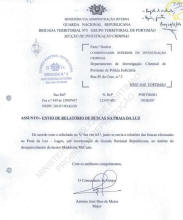 |
|
13_VOLUME_XIIIa_Page_3492 |
 |
|
13_VOLUME_XIIIa_Page_3493 |
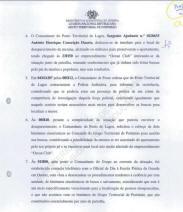 |
|
13_VOLUME_XIIIa_Page_3494 |
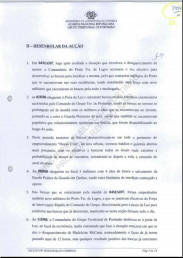 |
|
13_VOLUME_XIIIa_Page_3495 |
 |
|
13_VOLUME_XIIIa_Page_3496 |
 |
|
13_VOLUME_XIIIa_Page_3497 |
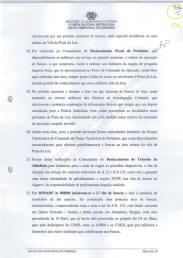 |
|
13_VOLUME_XIIIa_Page_3498 |
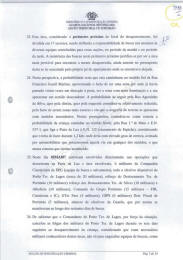 |
|
13_VOLUME_XIIIa_Page_3499 |
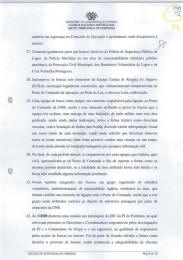 |
|
13_VOLUME_XIIIa_Page_3500 |
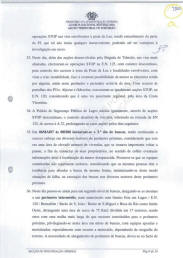 |
|
13_VOLUME_XIIIa_Page_3501 |
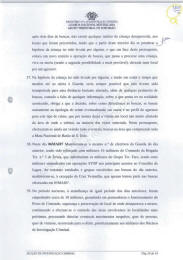 |
|
13_VOLUME_XIIIa_Page_3502 |
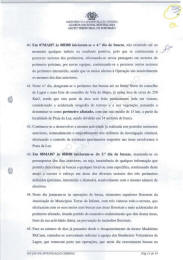 |
|
13_VOLUME_XIIIa_Page_3503 |
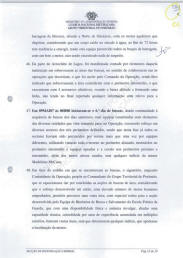 |
|
13_VOLUME_XIIIa_Page_3504 |
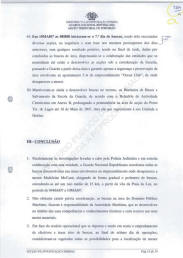 |
|
13_VOLUME_XIIIa_Page_3505 |
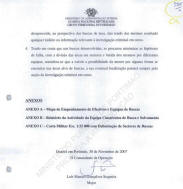 |
|
13_VOLUME_XIIIa_Page_3506 |
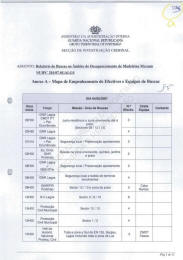 |
|
13_VOLUME_XIIIa_Page_3507 |
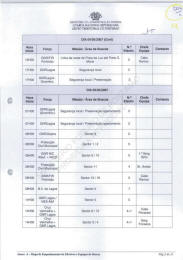 |
|
13_VOLUME_XIIIa_Page_3508 |
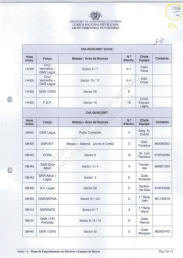 |
|
13_VOLUME_XIIIa_Page_3509 |
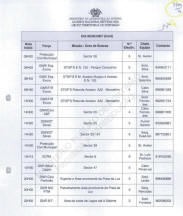 |
|
13_VOLUME_XIIIa_Page_3510 |
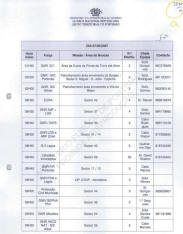 |
|
13_VOLUME_XIIIa_Page_3511 |
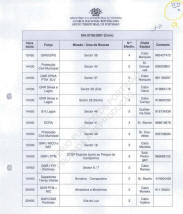 |
|
13_VOLUME_XIIIa_Page_3512 |
 |
|
13_VOLUME_XIIIa_Page_3513 |
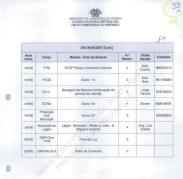 |
|
13_VOLUME_XIIIa_Page_3514 |
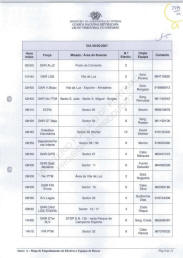 |
|
13_VOLUME_XIIIa_Page_3515 |
 |
|
13_VOLUME_XIIIa_Page_3516 |
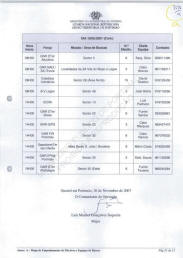 |
Processos Vol XIII
Pages 3491 - 3505
From the GNR
To: The Coordinator of the Criminal
Investigation
Portimao 3rd December 2007
Subject: Despatch of Report on the
Searches carried out in
P da L
In accordance with your request
mentioned above, we are sending the
report on the searches carried out
in P da L under the coordination of
the GNR, with regard to the
disappearance of Madeleine McCann.
With compliments.
Group Commander
Antonio Dias de Matos
Major
REPORT
Subject: Searches carried out in
relation to the disappearance of
Madeleine McCann.
I Situation.
1. On 3rd May at about 22.40 the
Lagos GNR post was contacted by
telephone and informed about the
disappearance of an English girl,
Madeleine McCann, aged 3, who was on
holiday with her family at the OC,
Block 5, apartment 5A, P da L,
Lagos.
2. This situation immediately led to
the deployment to P da L of members
of the GNR emergency patrol,
consisting of officers José Maria
Batista Roque and Neslon Filipe
Pacheco da Costa, who, at the moment
the communication was received, were
in the Odeaxere area and who
immediately left for the OC, where
they arrived at 23.00, with the aim
of finding out about the situation.
3. The patrol found the situation to
be somewhat strange as the way the
child had disappeared was not clear
as she had been sleeping inside the
apartment with the twins, whilst her
parents were out dining 50 metres
away in the same resort, and
therefore the officers contacted the
GNR post commander at 23.17, to tell
him that the parents were holding
the hypothesis that the child had
been abducted.
4. The commander of the Lagos post,
Sargeant Antonio Henrique Conceicao
Duarte immediately left for the site
the girl had disappeared from,
telling the officers to preserve the
apartment, and arrived at 23.50 at
the OC, where he was informed about
the situation together with the
patrol officers and where he saw
that searches had already taken
place, carried out by the girl's
father and locals, but without any
results.
5. On 4th May at 00.12 the Post
Commander ordered that the GNR Post
should contact the PJ in order to
inform them of the events,
considering that this could be a
crime that was of their competence
for investigation, also concluding
that more means were needed at the
scene to carry out searches to find
the girl.
6. At 00.40, given the complexity of
the situation that seemed to
surround the disappearance, the GNR
post commander requested
reinforcements from two sniffer dog
teams from the Portimao territorial
group to help in the searches,
considering the possibility that the
girl could have left the apartment
on foot and could be somewhere not
very far from the OC resort.
7. At 01.00 after the group
commander had been briefed about the
situation, telephone contact was
made with an official from the
Queluz GNR school, with the aim of
their releasing search and rescue
dog teams, seeing as these are
specially trained to find missing
persons, which is not the case with
the Portimao sniffer dogs, which are
essentially patrol dogs.
II
Development of Action
1. On 4th May, after having
evaluated the situation surrounding
the disappearance, the Lagos Post
Commander ordered searches for the
child to take place and contacted
officers who were at home, forming a
force of nine officers who searched
during the night and early morning.
2. At 02.00 they arrived at P da L
and began searching with the
Portimao sniffer dog teams, the
terrain searches were extended until
the morning with the dogs and
officers on the scene, as well as
the night guard and local people who
volunteered to help in the searches
that took place throughout the
night.
3. During this nocturnal period, the
searches took place along the entire
perimeter of the OC, in the urban
area, plots of land and the nearest
buildings, the officers searching
all the place where there was a
possibility the child might be, this
area being extended later to include
all of the beach zone.
4. At 08.00 three officers with 4
search and rescue dogs from Queluz
arrived at the scene, these dogs
immediately began to operate.
5. During the searches that began
again on 4th May in the morning, 9
officers from the Lagos post were
used as well as officers from the
Rapid Intervention Force, who were
sent to the beach to collaborate in
the searches talking place there,
and who were occupied in this task
for the rest of the day.
6. At 11.00 the Commander of the
Portimao Post went to the beach,
having noted the concrete situation
in which the disappearance had
occurred, namely the fact that more
than 12 hours had passed, without
any positive sign from the searches
that had taken place, felt it was
urgent that the action commander
should appear on the scene and he
named the head of the Criminal
Investigation Section, Major
Sequiera as the Operation Commander,
the latter arriving at the scene at
about 15.00 on 4th May.
7. With the aim of organising more
extended searches of the terrain, a
meeting was organised at about 15.00
with all the civil protection
competent entities, namely the
President of the Lagos Municipal
Chamber, the President of the Luz
parish, the maritime authority and
the district commander of search
operations with the aim of their
collaboration in the actions to be
taken, the GNR being responsible for
the coordination of the land
searches and the Maritime authority
would initiate specific searches
within its area of competence.
8. It was understood that everything
was prepared by these entities in
the operation of searches that were
designated for the area and great
advantage would be gained from the
knowledge of the terrain of the
persons that would be used.
9. The CDOS was asked about the
viability of using the SNBPC
helicopter during the searches that
would take place in the afternoon
and it was defined that the
helicopter would be used in the
searches and would be in P da L at
about 16.00.
10. Lines of action were
established, from the organisation
of the searches to be carried out
and the definition of areas,
according to their priority, using
the different means considered
adequate, by officers from the
different security forces, by
firemen and by civil protection
officers.
11. At 16.00 searches using the
helicopter were initiated, the
helicopter was used for 90 minutes,
covering the entire area from the
coast line to the EN 125, between
the limits of Atalaia and Ponta da
Cama da Vaca, this being the limit
of the area considered probable for
the child to be found, according to
the hypothesis that she had left the
apartment where she was staying on
foot.
12. During the helicopter search,
the area previously referred to was
covered, in phases, running from
north to South, this method is quite
efficient in open areas, where
something that does not fit with the
scenario being examined is easily
identifiable, however in the areas
being searched, given the quantity
of buildings and garden areas
present as well as the vegetation
composed essentially of small and
medium sized shrubs, the detection
of a child is difficult, given her
small size, whether she is immobile
or has fallen in a position that
does not reveal her physical
contours or covered by vegetation.
13. Simultaneously the searches for
the child continued, by means of the
officers referred to previously, in
all the areas surrounding the beach,
and many local people were seen, who
were looking for the child on their
own initiative.
14. At 20.00 a new meeting was held
with the entities involved, in the
sense of making an evaluation of how
the searches had been carried out up
to that moment and given the absence
of results, it was decided to
continue them for the next days or
until some result was achieved.
15. On the part of the GNR, as
responsible organisation, not just
for the searches on the ground, but
also for the security of the
perimeter surrounding the apartment
the child disappeared from, it was
agreed to maintain a force headed by
an officer, considering that on the
scene there was a concentrated
number of national and foreign press
teams and the site had also become a
meeting point for people going
through information about the case
which needed to be gathered and
passed on to the police.
16. Considering that the searches
that had taken place with the help
of the helicopter had not yielded
any results, it was agreed to
reinforce and extend the foot
searches and reinforcement from the
search and rescue dog team was
requested, which arrived at P da L
at 23.00 with 3 more sniffer teams
for a total of six officers and
eight specialised dogs.
17. During the nocturnal period,
field searches were reduced, given
the lack of visibility, searches
were made by EPG officers with the
search and rescue dogs which
concentrated particularly on the
urban area of P da L.
18. The commander of the Portimao
Prosecutor Division, which provided
the officers for the nocturnal
period was asked for the search
operation order, which took place,
the officers of that search force
being organised by attributing them
an area, next to the coastline,
surrounding P da L, based upon the
knowledge these officers had of the
area.
19. In the nocturnal period and for
the duration of the search phase,
officers from the Criminal
Investigation Nucleus remained on
the ground who made the first
exploration of diverse information
that emerged, which was then
channelled to the PJ, these officers
also covered the locations closest
to P da L, working in a certain way
as operation reserve command during
that period.
20. During this phase, during the
nocturnal period, sniffer teams from
the Portimao Territorial Group that
were directed essentially to carry
out patrols and searches in the
urban area of P da L.
21. Indications were given to the
Commander of the Albufeira Traffic
Division to send available patrol
teams to the Lagos area with the aim
of carrying out a reinforcement of
circulation control from the A22 and
EN125, with the aim of guaranteeing
greater intensity of patrols and
STOP actions on the access roads to
the Algarve, under the
responsibility of police officers
from that unit.
22. On 5th May at 08.00 the second
day of searching began and given the
absence of results from the previous
day, a first systemised search area
was established, including the
entire area south of the EN 125,
Quatro Estradas/Atalaia and
Almadena/Burgau being the limits,
with an approximate area of 16 km2,
which had already been covered on
4th May by the CDOS helicopter
between 16.00 and 17.30 and by
officers and members of other
entities that collaborated in the
searches.
23. This area, considered to be the
close perimeter of the site of
disappearance, was divided into 17
sectors, the search responsibility
was given to the different teams
that had been established for this
purpose, during the morning and
afternoon. The insistence upon
searches in this close perimeter was
justified by its being the most
probable area where the girl would
be found, still working on the basis
of the theory that she could have
the left the apartment where she was
staying on foot.
24. Working from this perspective,
the probability was that she would
have walked south in the direction
of Rua Francisco Gentil Martins,
because of the fact that it was an
area that she had passes several
times on the way to the beach,
because it was the zone with the
best illumination and because the
road sloped downwards. The
probability of her having taken the
route towards Rua Agostinho da
Silva, either to the right or to the
left, was considered to be
relatively reduced, because of the
fact that this area was darker and
that the ground layout presents an
ascending direction. In these
theories, it was considered to be a
remote probability that the girl
would have walked north to the Rua
1 de Maio and the EN 537-1 that
links P da L to the EN 125 (Espiche
crossing), considering that she
would have done this over 1.2 km and
where there would have been a
greater degree of certainty that she
would have been seen by motorists
travelling on the road in either
direction, the latter never having
been reported.
25. On 5th May, those directly
involved in the operations that took
place in P da L and the surrounding
area were 6 officers from the EPG
sniffer team (search and rescue
team), all available officers from
the Lagos territorial post (about 20
officers), reinforcements from the
Portimao Territorial Division (10
officers), reinforcements from the
Silves Territorial Division (10
officers), from Albufeira (10
officers), from the Portimao Command
Group (15 officers - FIR and IC),
from the Faro TG (4 officers), GIPS
(6 officers), from the Portimao
Prosecutors Division (5 officers) a
number of Guarda officers who were
maintained for the rest of the
search days.
26. It is be to be noted that the
Commander of the Lagos Territorial
Post, given the seriousness of the
situation, cancelled the leave of
officers from the post for seven
days following the girl's
disappearance, considering that it
was necessary to have officers with
knowledge of the area, not only for
the search teams but also for the
security of the Operation Command
and the apartment the girl had
disappeared from.
27. Others who took part in the
searches were officers from the
Lagos Public Security Police, the
Maritime Police within their area of
responsibility (maritime public
domain), officers from Municipal
Civil Protection, volunteer firemen
from Lagos and from the Portuguese
Red Cross.
28. Six officers from the Algarve
Canine Rescue team (ECRA) - a
legally constituted association -
joined in the searches by
volunteering their help at the P da
L Operations Post.
29. Each search team always had an
officer responsible for contact with
the Lagos GNR Territorial Post, this
officer would be attributed the area
that the team would search and would
give a photocopy of the marked area
to each of the officers showing the
indications about the technical
manner the searches should adopt,
with the formation of search lines,
there had to be a visual over view
of the limits of each officer's area
and they were told to observe all
accessible sites, where it could be
possible to hide a girl or a body
and the residents should be asked
whether they had any useful
information.
30. At the end of each search
period, the individuals responsible
for each group, whether they were
officers or civilians, would present
themselves at the Command Post, with
the purpose of reporting the way in
which the searches had been carried
out, whether the whole of the
attributed area had been searched
and if any pertinent information had
been gathered.
31. An organised group of
volunteers, mainly English residents
from the area, were also integrated
into the searches, who also had a
Command Post contact member, this
group was attributed sectors that
had been previously searched by GNR
officers.
32. At 11.00 a meeting took place in
the Portimao DIC installations,
attended by the Directors and
coordinators from the PJ, the Group
Commander and the officer whose
signature appears below, in their
capacity as responsible officers for
the ground searches. The Guarda
referred to the way the searches had
been carried out, the feasibility of
implementing STOP actions on the
roads to Luz was discussed, the PJ
not having any objection,
considering that it could be useful
to the investigation.
33. On this day, apart from the
actions implemented by the Traffic
Brigade on the furthest roads, STOP
operations were carried out on the
EN 125, in a discontinuous manner,
to control the access routes to P da
L and surrounding areas, with the
aim of creating instability, given
the possibility that the girl had
been taken by someone within this
perimeter and was aiming to take her
from the area. With the help of
patrols from the PTR, Aljezur and
Odeceixe, STOP actions were also
carried out on the EN 120,
considering it to be a regional
penetration road to the area of
Costa Vicentina.
34. The Lagos Security Police also
carried out a random control of
vehicles, using the STOP actions
especially at the EN 125 roundabout
that gives access to the A22, these
actions were continued over several
days.
35. On 6th May at 08.00 the third
day of searches began, continuing to
make efforts in different sectors of
the close perimeter, considering
that this is an area with a high
number of houses, that it was
important to go through this area
again, with the aim of contacting
their owners, collecting information
that could be useful in locating the
missing girl. Effort was made that
the teams did not repeat sectors
they had searched previously, given
that people have the tendency to
search in the same way, thereby
minimising situations of error in
the execution of searches in the
different sectors of this close
perimeter.
36. On this day a second level of
searching was begun, with them being
extended to an intermediary
perimeter, in a semi circle with the
eastern limit in Lagos/ EN 120/
Bensafrim/ Barao de Sao Joao / Barao
de Sao Miguel and Boca do Rio as the
western limit, covering an are of
almost 75 km2, divided in 17 sectors
with a wider net than the area of
the close perimeter, a mixture of
searches was carried out in this
area, using foot and motorised
teams, especially the use of
motorcycles, depending on the
topography of the terrain. The need
to extend the perimeter of the
searches was due to the fact that no
sign of the girl had been found
during the previous two days in the
areas that had been searched and
from the third day the theory that
the girl might have been taken by
someone was considered and, in the
face of this hypothesis, the search
operation was given a new scenario,
becoming the search for a girl
'alive or dead' (the second
possibility being the most probable)
who had been left somewhere by an
abductor.
37. In the hypothesis that the girl
had been taken by someone and taking
into account the time that had
passed before the Guarda was
alerted, it would be possible that
she had been transported to a
distance quite far away, further
than any of the search perimeters,
however the lack of any information
about what really could have
happened, makes it necessary that
the decision about how to direct the
searches, should be based only on
the typology of the crime eventually
in question and on the profile of
the aggressor of this kind of crime,
who would normally leave the victim
in a place not very far from where
she had been taken and who would in
most cases bury the child. Within
the theory, searches were made using
an all terrain vehicle of the area
composed of the Mata Nacional do
Barao de S. Joao.
38. On this day, 6th May, the same
number of Guarda officers was
deployed as on the previous day and
was reinforced by 16 officers from
the Evora Territorial Brigade who
replaced officers from the Faro
Territorial Post, the latter being
used in STOP operations on the main
access roads to Lagos. The remaining
entities and search groups used the
day before were maintained with the
exception of the Red Cross which
only participated on 5th May.
39. During the nocturnal period, as
on the previous nights, about 18
officers were deployed, guaranteeing
the functioning of the Control Post,
security and the preservation of the
site the child had disappeared from,
the control of surrounding areas and
the closest localities was
continued, searching for suspicious
movements, whether by people or
vehicles, mainly using officers from
the Criminal Investigation Nucleus.
40. On 7th May at 08.00 the fourth
day of searching began, at that time
there was no sign or positive result
and so sectors of the perimeter
continued to be searched, new
examinations of the close perimeter
were carried out by new teams and
searches of the intermediate
perimeter were continued, the means
used being similar to those of the
previous days.
41. On this day the perimeter of the
searches was extended to Lagos in
the north and to Vila do Bispo in
the east, for an are of about 250
km2, these searches being carried
out almost entirely with the use of
vehicles, given the topography of
the terrain and the vegetation, this
was called the distant perimeter,
with an average radius of 15 km from
P da L, being divided in 14 search
areas.
42. The same activity carried out on
the previous nights took place,
namely the deployment of officers
from the criminal investigation
nucleus, controlling any eventual
suspicious movements in the areas
surrounding P da L.
43. On the 8th May at 08.00 the
fifth day of searching began,
maintaining the theories of the
previous days, in other words the
lack of existence of any information
to direct the searches to any
specific area and searches were
continued within the three
perimeters with the same number of
officers.
44. On this day the search operation
was joined by forest fire fighting
officers from the Terras do Infante
Association, using three all terrain
vehicles, who carried out searches
using their own means in forest and
rough terrain areas of the distant
perimeter, using their exhaustive
knowledge of these areas gleaned
from their daily activities of
preventing forest fires.
45. Given the number of days that
had passed since the disappearance
of Madeleine McCann it was
considered appropriate to request
help from the Lagos Voluntary
Firemen who took part in the
operations, and on this day carried
out searches as the Bravura dam,
situated to the north of Odeaxere,
using their aquatic equipment,
considering that a body that has
fallen or been thrown into water
tends to surface after 72 hours,
this team searched all the branches
of the dam using an outboard motor
and found nothing suspicious.
46. Officers from the Lagos Aeroclub
offered their help in flying over
the search areas with the aim of
collaborating in the ongoing
operations, their offer was accepted
by the Operations Commander and they
were instructed to fly over the
Intermediate perimeter, they used 4
ultra light planes, flying at low
height and in a line formation, but
found no information to report.
47. On 9th May at 08.00 the sixth
day of searching began, continuing
with the search sequences of the
previous days using teams of
officers from the different entities
that had participated in the
operation, searching in the three
perimeters that had been defined, at
this stage all the sectors had been
covered at least once by different
teams, using all terrain vehicles in
the distant perimeter, motorcycles
in the intermediate perimeter and
foot and horse teams in the close
and intermediate perimeters, as well
as air searches, without any sign of
the girl being found.
48. Given the status of the
searches, the officer undersigned,
as Operation Commander proposed to
the Portimao Territorial Group
Commander that the searches of the
area should be concluded,
considering that the efforts made
until then, with an elevated number
of human resources used had allowed
for the searching of a vast area,
especially due to actions of the
search and rescue sniffer teams,
which with a great physical and
spirited skill, with the help of
technical capacity, consolidated by
years of accumulated experience in
multiple scenarios, searched vast
areas without detecting any sign
leading to the girl's location.
49. On10th May at 08.00 the seventh
day of searching began, different
actions took place in the sequence
of the previous days' searches,
without yielding any positive
results and at the end of the
afternoon the searches were
concluded and the participation of
the entities that had carried out
activities under the coordination of
the Guarda was dispensed with, from
that date onwards the Guarda only
guaranteed the security and the
preservation of the area surrounding
the apartment the girl had
disappeared from.
50. The search and rescue sniffer
teams continued to carry out
searches - as can be seen from the
report in Annex B - until 18th May
when they returned to the Queluz
post.
III Conclusion
1. In parallel to the
investigations carried out by
the PJ and in strict
collaboration with this entity,
the GNR coordinated all the
searches carried out in the
areas surrounding the resort the
girl disappeared from, gradually
increasing the search
perimeters, extending them to a
radius of 15 km from P da L from
4th to 10th May.
2. Searches carried out in the
Maritime Public Domain were the
responsibility of the Maritime
Authorities, who carried them
out within the scope of their
knowledge, technical experience
and using their own means.
3. Given the operational
scenario and taking into account
the deployment of officers and
the areas searched, at the end
of the seventh day of operations
it was decided that all
possibility of finding the girl
by means of searches of the area
had been exhausted, no sign or
information relevant to the
investigation having been found.
4. Taking into account that
during the searches carried out,
care was taken to minimise the
hypothesis of error, with the
division of the area into
sectors and searches undertaken
by different teams, it is
considered that if there is any
possibility that the girl should
be found in areas searched, her
eventual location would lead to
action from the ongoing criminal
investigation.
Annexes
Annex A. Map showing Deployment
of Officers and Teams.
Annex B. Report on the Sniffer
Dog Search and Rescue Team
Annex C. Military letter with
search area limits.
Portimao, 30th November 2007
Operation Commander
Luis Manuel Goncalves Sequeira
Major
|
|
13-Processos Vol XIII Pages 3517
|
|
13_VOLUME_XIIIa_Page_3517 |
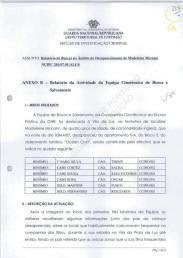 |
|
13_VOLUME_XIIIa_Page_3518 |
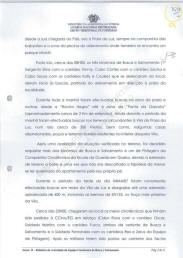 |
|
13_VOLUME_XIIIa_Page_3519 |
 |
|
13_VOLUME_XIIIa_Page_3520 |
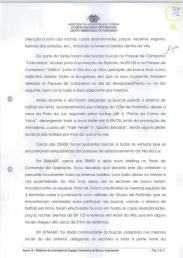 |
|
13_VOLUME_XIIIa_Page_3521 |
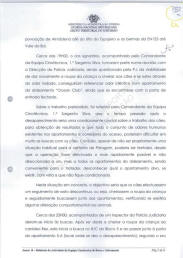 |
|
13_VOLUME_XIIIa_Page_3522 |
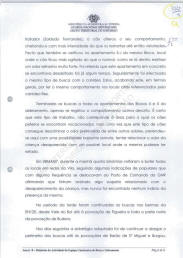 |
|
13_VOLUME_XIIIa_Page_3523 |
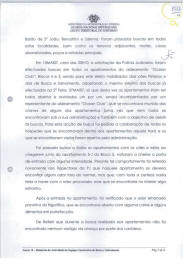 |
|
13_VOLUME_XIIIa_Page_3524 |
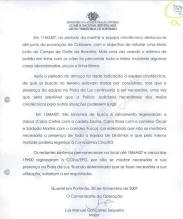 |
GNR Report
Subject: Report
of Searches Related to the Disappearance of
Madeleine McCann
Annex B. Report on the Sniffer Dog Search and
Rescue Team
1. Methods used
The sniffer dog search and rescue team of the
GNR was sent to Vila da Luz in the attempt of
locating Madeleine McCann, aged four, of British
nationality, who disappeared on the night of 3rd
May, from apartment 5 A, Block 5 of the OC
resort, the team was composed as follows:
Sargeant Silva - Dog: Timmy
Officer Cortez - Dog: Sacha
Officer Sousa - Dog: Kolly/Cookie
Officer Rosa - Dog: Oscar
Officer Martins - Dog: Fusco
Officer Fernandes - Dog: Rex/ Zarus
II Description
After arriving at the scene, the first three
members of the team, the officers gathered some
information from the girl's parents about the
places they tended to frequent with the children
during their stay in P da L up until now, the
parents replied that the only areas that their
daughter would frequent since their arrival, was
Praia da Luz beach, always accompanied by
babysitters and resort pool area, where there
was also a playground.
After this, at about 08.00 the three search and
rescue sniffer dog teams (Silva with Timmy,
Cortez with Sacha and Sousa with Kolly and
Cookie) who had arrived at the site, began
searching, leaving the resort in the direction
of the beach.
During the entire morning, searches were made of
the beach and rocks, from Rocha Negra to the
area of Ponta da Gaviota (an approximate area of
2 km). During the morning searches were also
made of the areas surrounding Praia da Luz, with
a radius of about 300 metres, as well as some
abandoned houses, wells and plots of land inside
P da L.
After an evaluation of the situation in the
field, it was decided to request two more search
and rescue sniffer dogs from the GNR Queluz
station, given the extent of the terrain to be
searched, whilst the hypothesis that the girl
could have left the apartment on foot was not
discarded.
During the afternoon of 4th May, more searches
were carried out around Vila da Luz and were
extended to a radius of approximately 600
metres, including the surroundings of the EN125
in the stretch closed to P da L.
At about 23.00 the extra teams that had been
requested for reinforcement arrived (Officer
Rosa with Oscar and Officer Martins with Fusco,
both from the search and rescue unit and Officer
Fernandes with Rex and Zarus from the tracking
team).
After the officers had been updated about facts
relating to the disappearance, they tried to
reconstruct the route the girl might have taken
with the two tracker dogs. For this purpose the
dogs were given a blanket to sniff, provided by
the parents, which had been used by Madeleine.
Beginning to follow the track using Rex, from
the door of apartment 5 A (the place where the
girl had been sleeping) he would always head in
the direction of Block 4, leaving block 5 the
dog would turn to the left, pass by a metal
access door to a path existing between the
apartments blocks to the leisure area
(restaurant, pool and playground). Immediately
another attempt at reconstruction was made using
the dog Zarus, who, in general terms, ended up
following the same route as Rex and having the
same behaviour.
It is important to state that this tracking work
was carried out in an urban area and more than
24 hours after the girl's disappearance and
numerous persons had passed along the path the
dogs were tracking. It should also be stated
that the path the dogs followed within the
resort was practically totally surrounded by
walls and the concentration of odours was
stronger as they were protected from the wind.
The searches finished at about 01.30
On 5th May at about 08.00 after a briefing, two
teams consisting of 3 dogs each accompanied by
officers from Portimao, again carried out
searches in the whole of the Vila da Luz area,
with an approximate radius of 2 kilometres,
paying special attention to the rocky areas,
abandoned houses, wells, drains, road verges
etc..including plots of land within P da L.
During part of the afternoon, searches were
carried out in the Turiscampo camping site
situated next to Espiche on the EN125 and in the
Orbitur camping site next to Vila da Luz. This
search operation had the objective of checking
all the bungalows whose occupants had left on
the day of the disappearance or on the following
day as well as the adjacent areas.
During the day the searches were extended using
the method of searching in file, accompanied by
officers from Portimao, from the P da L area
following the rocks up to Ponta da Cama da Vaca,
taking in all of the northern zone to the EN125
as well as the village of Almadena, the Vale
Verde zone and Quatro Estradas, some of the
areas had already been searched more than once.
At about 22.00 all the vehicles parked in Vila
da Luz parking spaced were checked.
On 6th May at about 08.00 and after another
briefing from the Operational Command Post, it
was decided that on that day they would again
search all the plots of land with thick
undergrowth within P da L, but that this time
the search sections were divided amongst the
teams. For this purpose the same teams of three
dogs together with officers from Portimao who
had been selected to help using the method of
searching in file, carried out searches in all
abandoned buildings, wells, rocks, verges of the
EN125 and land surrounding P da L, in some cases
reaching distances of 2 km.
On 7th May the same searches were continued,
being extended to to the entire northern part of
Almadena to the site of Espojeiro and the verges
of the EN125 until the Boi valley.
At about 19.. the undersigned officer,
accompanied by the Commander, Officer Silva,
took part in a meetings with the PJ Directorate,
being asked by the PJ about the viability of
giving the girl's clothes to the dogs for the
dogs to sniff again, and if by means of the
odour inhaled, they would be able to mark an
identical odour in one of the resort
apartments even though its door was closed.
With regard to this task, Officer Silva referred
to the fact that the time that had passed would
be a crucial condition for the dogs' work in
obtaining results and that the entirety of the
human odours existing in the apartments and
access paths could make the dogs' searches very
difficult. However, in spite of not being a
normal situation for tracking, it could be
attempted, whilst the operation should be
carried out as quickly as possible and not
directed towards one but to all the apartments
in the resort, it being appropriate for the
handler not to know which apartment was chosen,
so as not the be conditioned.
In this concrete situation, the objective would
be for the dogs to carry out a discontinuous
search, in other words, to sniff the girl's
clothes and immediately search near to the
apartments, checking to see if there was any
change in the behaviour of the dogs.
At about 23.00 accompanied by a PJ inspector,
the searches were begun. After Rex was given the
girl's clothing to sniff, he began to search on
the ground floor of block 5 and when he passed
the door of apartment 5 A (the place the girl
had disappeared from) according to his handler,
officer Fernandes, the dog altered its
behaviour, sniffing with greater intensity than
he had done before. Apartment 5J of the same
block was also checked as the dog had been more
agitated than before as if there were a very
strong strange odour there. It was stated that
this apartment had been unoccupied for some
time. Afterwards, the same kind of search was
carried out using the dog Zarus which in general
terms showed the same behaviour in the same
places as Rex had done.
It was only when all the searches of the
apartments in blocks 4 and 5 were complete, that
the behaviour described above was registered. It
is certain that this kind of work does not
correspond to the area that these dogs were
trained in, but given that these types of dogs
manage to discriminate a specific odour from
others, although it could be a remote
possibility that they related the odour of the
missing girl with a possible location where she
could have been.
On 8th May during the morning four teams
returned to search all the areas around Vila,
following some indications from local people who
had frequently gone to the GNR Command post
saying they had seen something suspicious
related to the disappearance but no sign of her
presence was ever found.
During the afternoon searches along the verges
of the EN125 were continued from Boi valley to
Figueira and the whole northern part of Budens.
On the following days the strategy adopted was
to continue to extend the perimeter of the
searches to the villages of Barao de S Miguel
and Burgau, Barao de S Joao, Bensafrim and
Salema. Searches were carried out in all of
these locations, as well as adjacent land,
vegetation, abandoned houses, wells and main
roads.
On 10th May at about 20.10, upon the request of
the PJ, searches were carried out in all of the
apartments belonging to blocks 4 and 5 of the
OC, two tracker dogs and two search and rescue
dogs being used for this operation, adopting the
same methods as those used on 7th May, just that
this time the apartments were all open and
searched one by one, being accompanied by a
representative from the resort, who had the keys
to all the apartments (apart from those not
under her administration) and also with the
objective of helping with the searches. The
collaboration of all the guests occupying the
apartments at that time was requested for this
purpose and those apartments that were found to
be empty were opened by the administrator.
All the apartments were searched by the dogs and
when they arrived at apartment 5 J they began to
sniff with intensity at the entrance door.
During this behaviour it was noted by the PJ
officers that there must be some unusual odour,
but which with all certainty did not have
anything to do with the odour being searched
for, but there must have been something strange
inside.
After entering the apartment, it was observed
that the dour came from close to the fridge,
which was open and contained some rotting meat
and vegetables.
During the searches carried out in the
apartments no sign of the girl was found by the
dogs.
On 11th May in the morning, the team went to
Odiaxere to visit a forest near the Boavista
golf course. The whole forest was searched using
the in file method, including some abandoned
houses, wells and rail track.
After lunch the team was told that the searches
were concluded but that their presence in P da L
would continue to be necessary according to the
requirements of the PJ for any other situations
that might occur.
On 15th May three search and rescue dogs
returned to Lisbon (Officer Cortes with Sacha,
Officer Rosa with Oscar and Officer Martins with
Fusco) considering that there was no longer any
need for them.
The other dogs and their handlers remained on
site until 18th May when at about 19.00 they
returned to Cino/EPG as their presence was no
longer require in P da L, although it was
determined that if their use were required in
the future, they would return.
Signed
30 November 2007
Operation Commander
Major Sequeira |
|